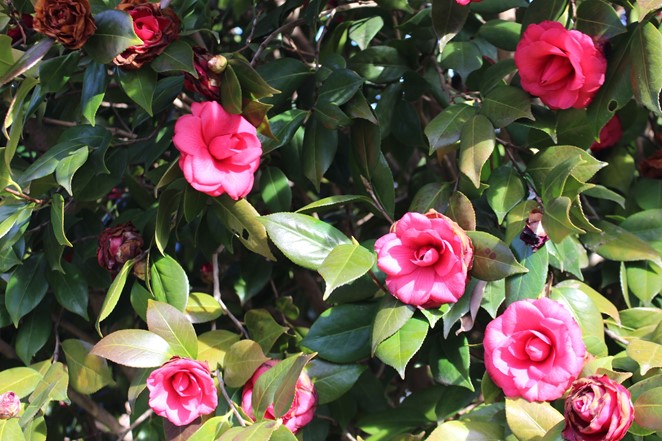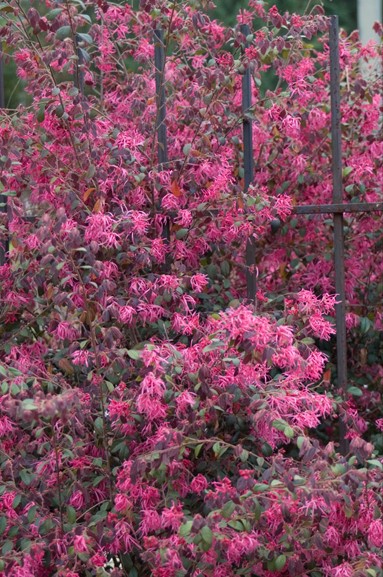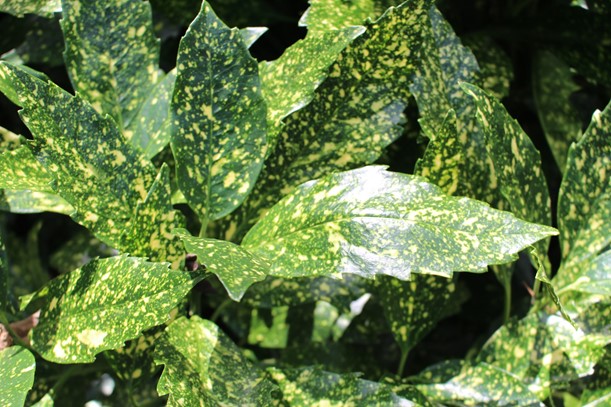What Can I Plant for Privacy?
go.ncsu.edu/readext?810513
en Español / em Português
El inglés es el idioma de control de esta página. En la medida en que haya algún conflicto entre la traducción al inglés y la traducción, el inglés prevalece.
Al hacer clic en el enlace de traducción se activa un servicio de traducción gratuito para convertir la página al español. Al igual que con cualquier traducción por Internet, la conversión no es sensible al contexto y puede que no traduzca el texto en su significado original. NC State Extension no garantiza la exactitud del texto traducido. Por favor, tenga en cuenta que algunas aplicaciones y/o servicios pueden no funcionar como se espera cuando se traducen.
Português
Inglês é o idioma de controle desta página. Na medida que haja algum conflito entre o texto original em Inglês e a tradução, o Inglês prevalece.
Ao clicar no link de tradução, um serviço gratuito de tradução será ativado para converter a página para o Português. Como em qualquer tradução pela internet, a conversão não é sensivel ao contexto e pode não ocorrer a tradução para o significado orginal. O serviço de Extensão da Carolina do Norte (NC State Extension) não garante a exatidão do texto traduzido. Por favor, observe que algumas funções ou serviços podem não funcionar como esperado após a tradução.
English
English is the controlling language of this page. To the extent there is any conflict between the English text and the translation, English controls.
Clicking on the translation link activates a free translation service to convert the page to Spanish. As with any Internet translation, the conversion is not context-sensitive and may not translate the text to its original meaning. NC State Extension does not guarantee the accuracy of the translated text. Please note that some applications and/or services may not function as expected when translated.
Collapse ▲Evergreen plants can create a living hedge to help homeowners add privacy to their yards. At the same time they can provide many additional benefits like food and habitat for birds and pollinators, fragrance, lovely flowers, and security. There are many options when selecting plants to create a screen or border, so take time to research and select plants that will thrive in your site and will provide multiple benefits.
Many home landscapes feature screens or hedges created by a mass planting of one species. However, if faced with disease or insect problems, this can result in complete loss of the screen. Instead, consider planting a mixed screen, meaning including a variety of screening plants along the edge of your property. Not only will your screen be more resilient to pests and other challenges, but you can add interest by selecting a variety of plants with flowers, fruit, or foliage colors that pop at different times of the year.
Don’t place plants too close together. Though it is tempting to group them near each other to achieve an instant screen, this can cause problems later when the plants run out of room and start competing for resources. Instead, space plants according to their mature size, allowing room for them to grow.
Unfortunately, some of the traditionally popular plant choices for screens and hedges have developed pest issues. In order to avoid problems, homeowners may want to choose an alternative that is resistant to disease and insect pests. Though once a common choice for screening, Leyland cypress (x Hesperotropsis leylandii) is troubled by a variety of disease and pest issues including bagworms, blight and canker. Similarly, boxwoods are commonly planted as hedges, especially in older landscapes. However, in recent years, boxwood blight has increased in prevalence, leading to the decline and removal of boxwoods in landscapes across North Carolina and elsewhere. Other common pest issues with boxwoods include boxwood leaf miner and mites. Arborvitae are another plant commonly selected for screening. Thuja ‘Green Giant’ are popular due to their rapid growth rate, however, that fast growth can make these plants more susceptible to damage during storms. In addition, arborvitae may develop some internal browning and are susceptible to root rot. If you are interested in learning more, watch this webinar on issues associated with plants in the cypress family, which includes both arborvitae and Leyland cypress.
Despite the issues with some screening plants, there are a wide variety of evergreen plants that can be grown in North Carolina with minimal issues. Fall and winter are a great time to plant these in your landscape, allowing the plants to become established before the heat of summer.
Hollies are a good choice for screening and for attracting songbirds. Lusterleaf holly (Ilex latifolia) and ‘Nellie Stevens’ holly (Ilex x ‘Nellie R. Stevens’) are two options with dense, evergreen foliage and red berries that remain on the plant through fall and winter. Yaupon holly (Ilex vomitoria) and inkberry holly (Ilex glabra) are both native to parts of the southeastern United States. Cultivars of both species come in a variety of sizes. Yaupon holly can withstand shearing, making it a good choice for a hedge. The natural form of inkberry holly is rather informal and suckering, but newer cultivars have been selected to mimic the growth habit of boxwood and offer an alternative where boxwood blight is a concern.
Other evergreens offer the added interest of flowers. Camellias (Camellia sasanqua and Camellia japonica) feature dark green leaves and bloom during the fall, winter, and early spring, depending on the variety. Camellia flowers offer color when little else may be blooming in the garden. Though not showy, the white flowers on osmanthus fill the garden with a sweet fragrance. Some options are Osmanthus fragrans, Osmanthus heterophyllus, and Fortune’s Osmanthus (Osmanthus x fortunei).

Camellia japonica
Image: Leslie Rose
Another criteria for selecting plants is unique foliage. Aucuba (Aucuba japonica) is an excellent choice for a shady area and offers foliage with yellow coloration. Most commonly, aucuba feature green leaves speckled with yellow spots. Loropetalum chinense, or fringe flower, is another colorful option. Many varieties feature purple foliage and pink flowers. Fringe flowers can tolerate pruning, but try to choose a variety whose mature size matches your needs.

Loropetalum chinense
Image: ricox CC BY NC ND

Aucuba japonica
Image: Leslie Rose
Plants that add textural interest to a screen include Japanese cedar (Cryptomeria japonica) and Japanese plum yew (Cephalotaxus harringtonia). Both of these feature needle-like, evergreen foliage. Many cultivars exist with a variety of growth habits and sizes, making it a good fit in a variety of spaces.
For landscapes that face pressure from deer, a few deer-resistant options exist. Hardy anise shrub (Illicium parviflorum) is a deer-resistant evergreen that can grow in the shade. The ‘Florida Sunshine’ cultivar features striking yellow foliage. Chindo viburnum (Viburnum awabuki ‘Chindo’) is a durable plant that can also withstand drought-like conditions after it is established.
Whatever challenges may exist in the landscape, there is likely an evergreen plant that can be grown with proper care and maintenance. To learn more about these and other plant options, visit the NC Extension Gardener Plant Toolbox.


